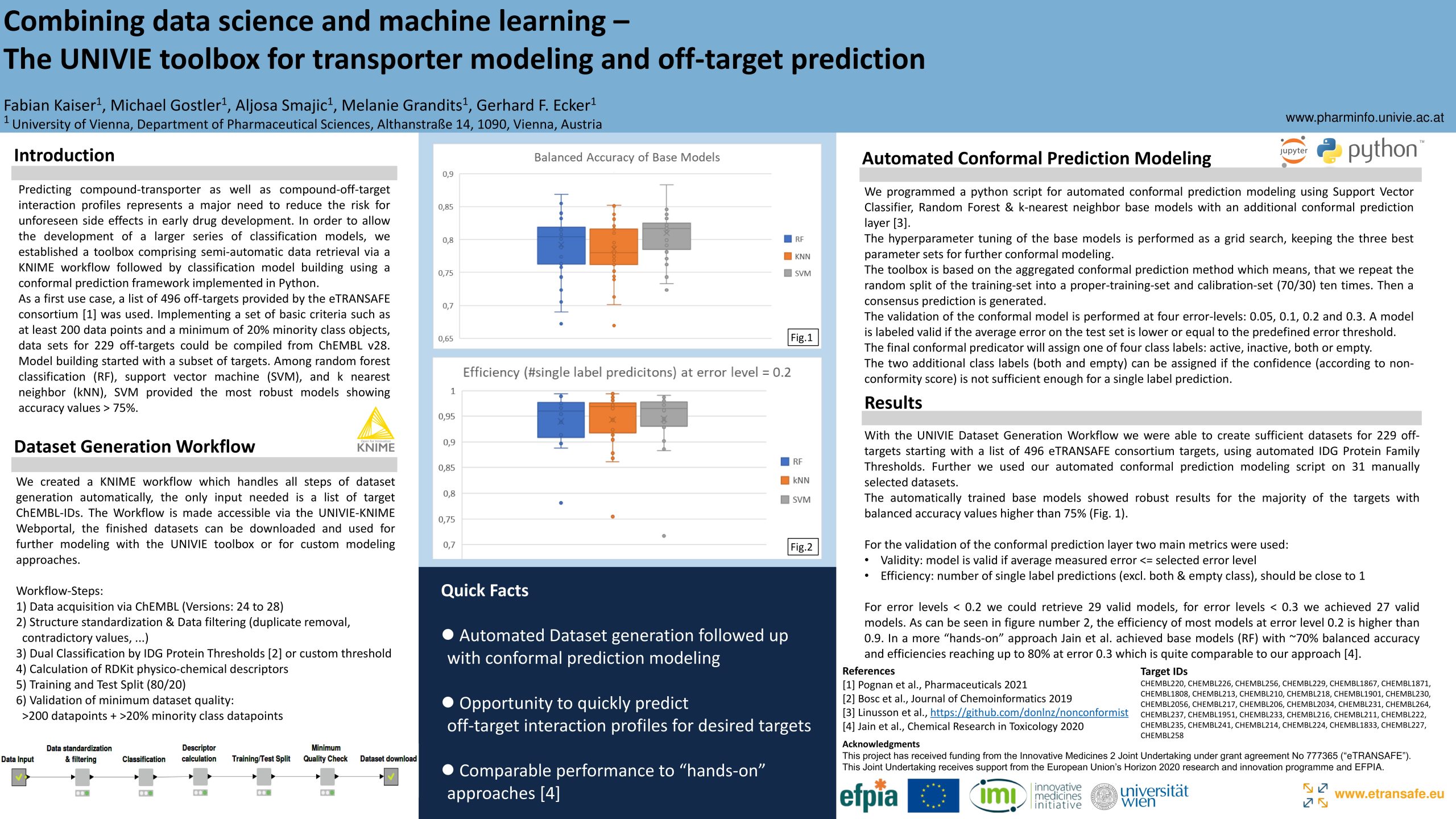What is the UniVie Toolbox?
TLDR: The UNIVIE toolbox is a (semi-) automated machine learning workflow based on KNIME and Python that enables large-scale transporter modelling and off-target prediction. It automatically generates high quality datasets for targets of interest and trains conformal prediction classifiers.
Have a look at the abstract or watch the recording of my ACS Fall 21 poster presentation where I give a more detailed overview of the UniVie toolbox features!
Abstract
Besides lack of efficacy, toxicity still presents the major cause for failures in the drug discovery and development process. Predicting compound-transporter as well as compound-off-target interaction profiles represents a major need in order to reduce the risk for unforeseen side effects. In order to allow the development of a larger series of classification models, we developed a toolbox comprising semi-automatic data retrieval via a Knime workflow followed by classification model building using a conformal prediction framework implemented in a Jupyter notebook.
As a first use case, a list of 496 off-targets provided by the eTRANSAFE consortium was used. Implementing a set of basic criteria such as at least 200 data points and a minimum of 20% minority class objects, data sets for 229 off-targets could be compiled from ChEMBL v28. Model building started with a set of 9 transmembrane transporter, which are linked to toxicity and drug-drug interactions (P-glycoprotein, BSEP, BCRP, MRP3, OATP1B1, OATP1B3, OCT1, OCT2, MATE1). Among random forest, support vector machine, and k nearest neighbor, RF provided the most robust classification models showing accuracy values > 75%.
Together with the software package Flame and a Knime server implementation for model building, the UNIVIE toolbox will form the methodological basis for the eTRANSAFE off-target prediction challenge.

Why did we create it?
WORK IN PROGRESS
The text was written in English and then automatically translated.